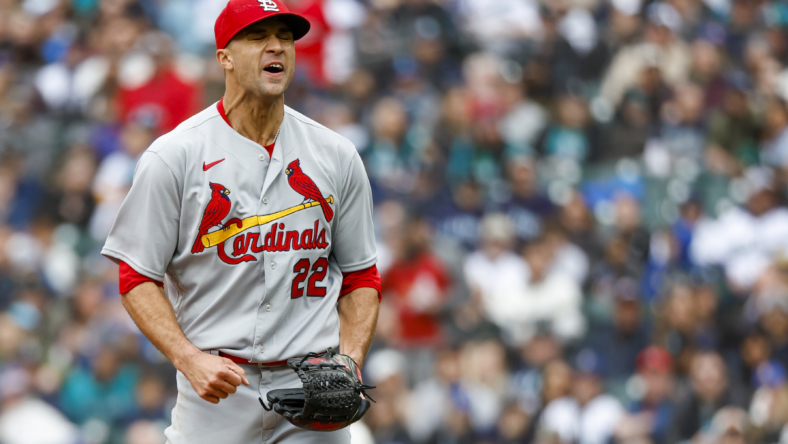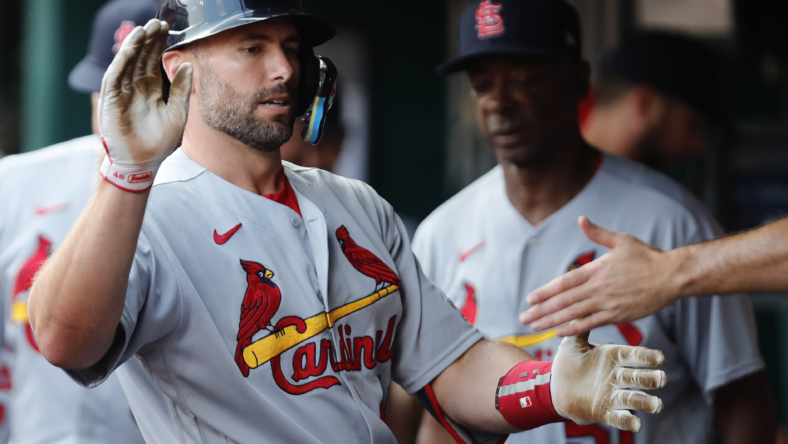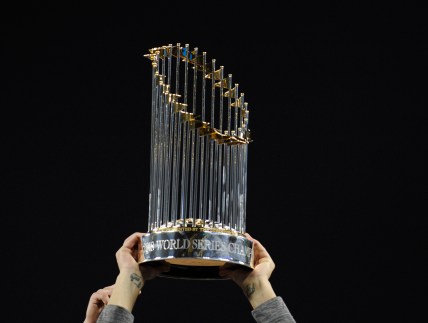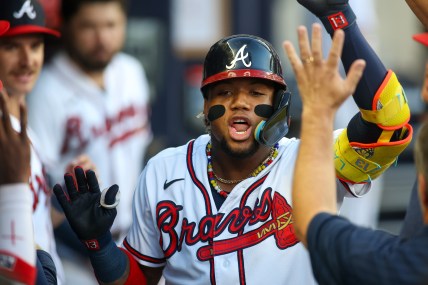ST. LOUIS — It happens before every St. Louis Cardinals game. Fans settle into their seats, some 40,000 strong. Predominantly, they are dressed in Cardinals attire, jerseys, adorned with a favorite number or name on back. “Musial,” “Gibson” and “Smith” are popular choices, a scattered “Gagliano” or “Landrum” is visible. The more obscure the better, some would say.
And as they sip their Anheuser-Busch products and savor the majestic ambiance, the public address announcer applies the accepted perspective. “Welcome to baseball heaven.”
It’s a soul-stirring summer experience, to be sure. But these days, the statement seems a little presumptuous. That is, to quote a lyrical line from Don Henley’s Hotel California, “this could be heaven, or this could be hell.”
As things stood Friday morning, 63 games into a fresh season, a city that refers to itself as the “best baseball town in America” has one of the worst teams in the major leagues. Moreover, with the help of the hapless Kansas City Royals 250 miles to the west, there is more lousy baseball being perpetrated in Missouri than in any other part of the country.
This used to be the “Show Me State,” it is now the “Show Me Mercy State.”
The fall from grace is particularly stunning in St. Louis, where the Kool-Aid runs thick and the population — locally and regionally — invests heavily in the identity. Cardinals loyalty is a bodily function here, what keeps people regular.
The St. Louis Cardinals have been living on the allegiance for a while now. But their celestial reputation, at least recently, is built on rather ambiguous footing. For instance, the organization can crow that it is consistently competitive, and point to 10 postseason appearances over the past 14 seasons. Facts are facts, but the competitive quality depends on where you place the goalposts.
S’true, the Cardinals have been to the postseason frequently. Since a three-year hiatus in the late 1990s, the club has played extra games in 16 of 23 seasons. It would be silly to denigrate that, any major-league city would take it.
On the other hand, the last championship in St. Louis was 2011, or 12 years ago. Since making it back to the World Series in 2013, the St. Louis Cardinals are 11-22 in postseason play and most recently 1-9. It has been eliminated at the wild card table three consecutive times and advanced to the 2019 National League Championship Series only to get swept by the Washington Nationals.
And keep in mind, this is not the 1960s, when the clubs of Bob Gibson and Lou Brock went to the World Series three times, when just two of 20 teams made the grade, when the challenge was far more imposing and the achievement far more honorable.
In today’s baseball, 12 of 30 teams spray postseason-clinching champagne. They roll out of spring training in the morning — even the worst among them — with a 40 percent chance of being playoff worthy. You don’t have to win your five-team division, you can finish second, you can even finish third. The wild-card Philadelphia Phillies were third in the NL East last season, then swept the “competitive” St. Louis Cardinals on their way to the World Series.
The NL Central is the Stay Puft Marshmallow Division. Look at the standings: first-place Milwaukee is a sizzling five games over .500. The pesky Pirates are a game back at three over par. Third-place Cincinnati is five back — while being five games under .500. Even the catatonic Cards, who snapped a five-game losing streak with a win on Wednesday, are within eight games of the division lead, while being 11 games under water.
Talking about consistent competitiveness is like bragging about a participation ribbon.
St. Louis Cardinals not acing the pitching test

So how did we get here? How did this organization with standard-bearer status, 11 world championships and a red-letter reputation stray so far?
The immediate and obvious answer lies in poor pitching — both its performance and procurement. The club came into the 2023 season expecting an ordinary staff to overachieve, an approach that has been in place for several springs. When the plan fractures, cracks are filled with second-hand caulk and trading deadline arms. Then the program reboots.
Jordan Montgomery has been in the majors for seven seasons, and with his 2-7 start in ’23 he is 30-30 overall. Steven Matz missed most of last season with a knee injury. When he has pitched during nine MLB seasons, he is 50-57. Jack Flaherty has been hyped as a potential “ace” for several years. But in recent years, he has spent more time on injury lists than pitching mounds.
Flaherty pitched six innings of a 1-0 victory over Texas on Wednesday, but he is four years removed from his career best of 11-8 in 2019. Not exactly meal ticket stuff.
Meanwhile, rather than invest in top-of-the-rotation stock, the club gave 41-year old Adam Wainwright $18 million to return for one more season. Wainwright has been a Cy Young caliber pitcher in an 18-year career, and a beloved personality. But he’s on the closing holes here, about to putt out. A 2-1 mark and 5.71 ERA can’t elevate a pedestrian group.
The St. Louis Cardinals staff has absorbed the second-most hits (582) in the NL, just behind the Colorado Rockies (588) and the AL’s feeble Oakland A’s (610). Miles Mikolas remains credible, and has lowered his ERA (.374) with a spat of effectiveness, but the rest of the starters combine for an ERA that barely dips below 5.00
Let’s just say if a Cardinals starter goes five or more innings, and doesn’t leave the mound in a body bag, it should be considered a quality start. Of course, the situation stresses a bullpen that has sprung its own leaks. The team ranks 29th out of 30 NL teams in saves this season, second in blown saves.
A roster with some talent

This is not a roster without talent, and many thought it would be better. Reigning MVP Paul Goldschmidt and third baseman Nolan Arenado are studs, while Nolan Gorman is an emerging slugger. The offense is in the upper echelon of the league in many categories. But by nature, offense is a non-bonded, fluid part of baseball.
They don’t hit off a tee in the big leagues, and the opposing squad also uses varsity players.
The St. Louis Cardinals have lost 14 times when they plated four or more runs. As the great Mickey Rivers once said, “Pitching is 80% of the game, and the other half is hitting and fielding.” If you watch the ‘23 Cardinals, that makes all the sense in the world.
And this is not just about won-loss records and disturbing statistics. There have been head-scratching episodes, as well.
The St. Louis Cardinals replaced retiring star Yadier Molina with former Chicago Cubs catcher Wilson Contreras, signing the free agent to a five-year, $87.5 million deal. To repeat, this a player the Cubs passed on — the Cubs!
A month into the season — and into that contract — some of the failing pitchers began whining about Contreras’ receiving. Club officials threw Contreras under a Redbird Express and declared he would no longer be used as a catcher, but used as a designated hitter/outfielder. A few days later, all bets were off and Contreras was back behind the plate. Good thing, because with a .213 average, he doesn’t exactly strike fear as a DH.
Earlier in the season, manager Oli Marmol benched Tyler O’Neill when he felt the oft-injured outfielder used too much caution in getting thrown out at the plate. Shortly thereafter, O’Neill went back on the DL with a back problem. Maybe he didn’t use enough caution, eh?
More recently, promising prospect Jordan Walker revealed the organization has been on him to hit more balls in the air. This is a 21-year old kid who recently ripped a 111 mph ground ball past a Pittsburgh shortstop, who only had time to unsuccessfully dive for the ball … a step and a-half away.
Somewhere along the line, “Cardinal Way” has taken a wrong turn. And you can bet none of the MLB fraternity feels bad about it. When you have success, envy and loathing is not far behind. The last time the team finished under .500 was in 2007, and there have only been three such records since 1995.
At the same time, as aforementioned, St. Louis has not always been world beaters — and still they come. Perhaps that sends a problematic message. In other words, the organization has built a brand that has become self-perpetuating. If the St. Louis Cardinals build it, they will come, regardless of how well-built it is. Doesn’t have to be the best, just in the ballpark.
Devotion is wonderful, but unwavering devotion can be dangerous. St. Louis ranks a modest 19th among MLB’s largest markets — according to sportsmediawatch.com. But it is second only to Los Angeles (second largest market) in MLB average attendance (39,967). The Cardinals are on pace to draw more than 3 million for the 18th consecutive season — not affected by Covid.
The way things are, the St. Louis Cardinals are not held to a fire. In “baseball heaven,” competing for one of the six watered down playoff spots is enough to bring them back. This is not to accuse the Cardinals of complacency or even suggest it. But seriously, how does an organization not become spoiled by that? This is a business, after all, and that’s a guaranteed return on investment. Hard to ignore.
That said, if you’re inclined to wallow in the Cardinals’s misery, enjoy it while it lasts. Things can change quickly in the baseball universe, we’re talking pitch-clock fast. Their struggles aside, the St. Louis Cardinals have a number of promising young players and a potentially robust lineup. Perhaps a bad season or two will be a wakeup call, remove the blindfolds of the faithful and open the pitching purse strings.
After all, everybody wants to go to heaven, but nobody wants to die.
Dan O’Neill writes columns for Sportsnaut. Follow him on Twitter at @WWDOD


